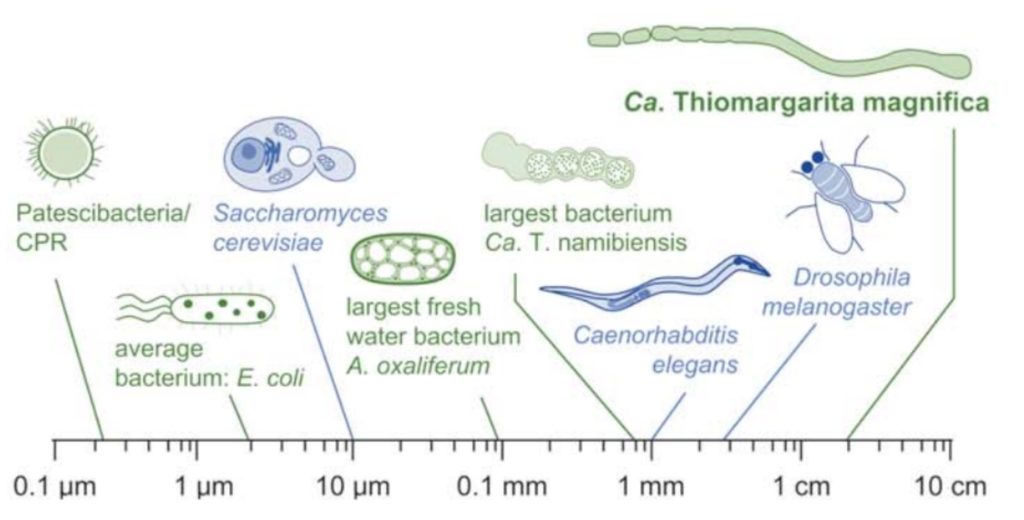The authors of the new work wondered how the bacterium grew to such a size. We are talking about the species Thiomargarita magnifica,
 Comparison of T. magnifica with other creatures. (Volland et al., Science, 2022)
Comparison of T. magnifica with other creatures. (Volland et al., Science, 2022)
Centimeter T.magnifica was found on one of the islands of Guadeloupe back in 2009. At the time of the discovery, marine biology professor Olivier Gros was looking for bacteria that use sulfur to generate energy. But he found something completely different. While working, Gro poured a sample of marsh water into a Petri dish and saw thin, vermicelli-like threads. They could be observed with the naked eye.
 (Jean-Marie Volland)
(Jean-Marie Volland)
More than a decade later, several researchersdecided to study strange bacteria in more detail. The unusual organism was examined using fluorescence, X-rays, electron microscopy and genome sequencing. As a result, scientists confirmed that this is indeed a giant single-celled bacterium.
Previously, it was thought that bacteria could not grow tosize visible to the naked eye due to how they interact with the environment and produce energy. But T. magnifica has an extensive network of membranes that can produce energy, so it doesn't rely solely on its surface to absorb nutrients.
Unlike most bacteria, the geneticwhose material floats freely within their single cell, T. magnifica cell DNA is contained in small membrane-bound sacs called pepins.
T. magnifica also has a much larger genome than other bacteria, with 11,788 genes compared to 3,935 genes for the average prokaryote.
Read more:
Scientists uncover how vitamins affect the incidence of cancer
The space probe flew 200 km from Mercury. Look what he saw
The satellite of Jupiter was looked at in a new light: what scientists saw there